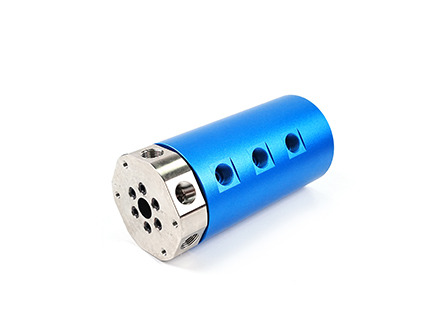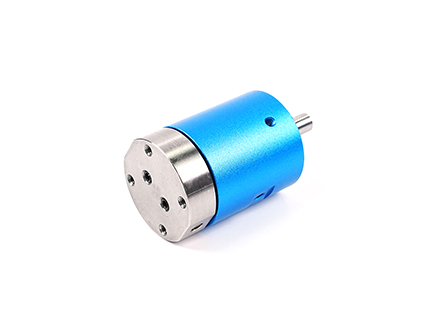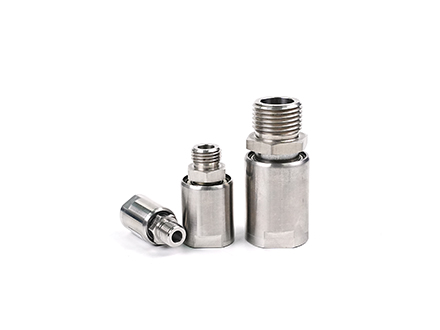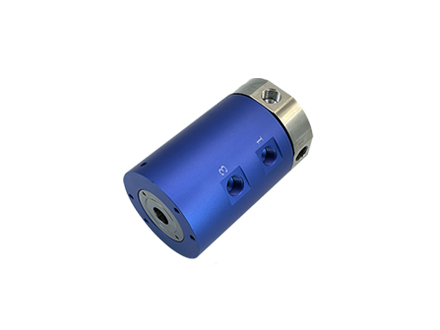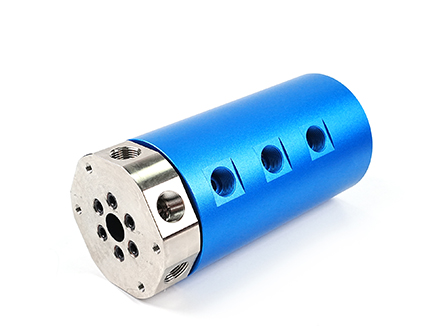 Definition
Definition
Hydraulischer Rutschringist ein speziell entwickeltes hydraulisches Bauteil, das hauptsächlich zur Übertragung von Hydrauliköl, Signalen oder Strom zwischen rotierenden und stationären Bauteilen verwendet wird. Er verbindet die Vorteile der Hydrauliktechnik mit den Drehübertragungseigenschaften von Gleitringen und ermöglicht eine Drehbewegung ohne die Fluid- oder Signalübertragung zu unterbrechen.
Merkmale
Kompakte Struktur: Hydraulische Rutschringe in der Regel ein kompaktes Design annehmen, um sich an verschiedene platzbegrenzte Anwendungsszenarien anzupassen.
Hohe Übertragungseffizienz: Durch die Optimierung von Flüssigkeitskanälen und Dichtstrukturen hydraulische Rutschringe kann eine effiziente hydraulische Übertragung erreichen und den Energieverlust reduzieren.
Rotationsstabilität: Hydraulische Rutschringe können eine stabile Übertragungsleistung während der Rotation aufrechterhalten und nicht leicht durch externe Störungen beeinflusst werden.
Zuverlässige Dichtung: Fortgeschrittene Dichtungstechnologie wird verwendet, um sicherzustellen, dass Hydrauliköl oder -signale während der Übertragung nicht lecken.
Lange Lebensdauer: Nach sorgfältiger Konstruktion und Herstellung haben hydraulische Rutschringe eine lange Lebensdauer und können sich den Bedürfnissen des langfristigen kontinuierlichen Betriebs anpassen.
Funktion
Hydraulisches Getriebe: Die Hauptfunktion der hydraulischen Rutschringe ist die Übertragung von Hydrauliköl und die Bereitstellung der erforderlichen Hydraulikleistung für rotierende Komponenten.
Signalübertragung: Zusätzlich zur hydraulischen Übertragung können einige hydraulische Schleifringe auch elektrische oder Datensignale übertragen und die Kommunikation zwischen rotierenden und stationären Komponenten ermöglichen.
Leistungsübertragung: Einige speziell entwickelte hydraulische Rutschringe können auch Strom übertragen und elektrische Unterstützung für rotierende Komponenten bieten.
Produktparameter
Arbeitsleben | Siehe die Tabelle zur Auswahl der Produktqualität | Nennspannung | 0-440VACNDC |
Nenndrehzahl | Siehe die Tabelle zur Auswahl der Produktqualität | Isolationsbeständigkeit | <500mq> |
Arbeitstemperatur | -30°C bis 80°C | Draht Spezifikation | AWG17#/AWG22#Silber beschichtetes Teflon |
Arbeitsfeuchtigkeit | 0 ~ 85% RXH | Drahtlänge | Standardlänge250mm |
Kontaktmaterial | Siehe die Tabelle zur Auswahl der Produktqualität | Isolationsfestigkeit | 500VAC@50XHz ,6S |
Schalenmaterial | Aluminiumlegierung | Dynamischer Widerstandsänderungswert | <0.010<> |
Rotation torque | 0.05N.m+0.02N.m/6Flow passage | Protection level | IP51 |
Application Fields
Machine tools and fixtures: In the field of machine tools and fixtures, hydraulische Rutschringe are widely used in components such as power chucks to achieve hydraulic power transmission and signal communication for rotating parts.
Aerospace: In the aerospace field, hydraulische Rutschringe are used to transmit hydraulic oil and signals to support attitude control and navigation systems of aircraft.
Ship and Ocean Engineering: In the field of ship and ocean engineering, hydraulische Rutschringe are used to transmit hydraulic power and signals to support the operation and monitoring of various marine equipment.
Automation and Robotics: In the field of automation and robotics, hydraulische Rutschringe are used to achieve hydraulic power transmission and signal communication of rotating joints, improving the flexibility and reliability of robots.
Maintenance and upkeep
Regular inspection: Regularly inspect the hydraulic slip ring, including checking the wear of seals and the blockage of fluid channels.
Cleaning and maintenance: Keep the hydraulic slip ring clean and regularly clean the dirt and impurities attached to the surface of the slip ring.
Replace seals: When worn or damaged seals are found, new seals should be replaced promptly to ensure the sealing performance of the hydraulic slip ring.
Lubrication and maintenance: Regularly lubricate and maintain hydraulische Rutschringe according to usage requirements to reduce friction and wear.
Avoid overload: When using hydraulische Rutschringe, overload operation should be avoided to avoid damaging the slip ring structure or affecting transmission performance.
Precautions
Choose the appropriate model: When selecting hydraulische Rutschringe, the appropriate model and specifications should be chosen based on specific application scenarios and requirements.
Correct installation: The installation of hydraulische Rutschringe should follow the instructions in the product manual to ensure correct and secure installation.
Avoid high temperature environment: When hydraulische Rutschringe work in high temperature environments, it may cause problems such as aging of sealing materials and decreased fluid performance. Therefore, it is advisable to avoid using hydraulische Rutschringe in high-temperature environments as much as possible.
Preventing vibration and impact: Hydraulische Rutschringe working in vibration and impact environments may cause structural looseness, seal failure, and other issues. Therefore, effective vibration reduction and buffering measures should be taken to minimize the impact of vibration and shock on hydraulische Rutschringe.
Regular inspection and maintenance: Regularly inspect and maintain the hydraulic slip ring, promptly identify and solve problems, and ensure the long-term stable operation of the hydraulic slip ring.
In summary, hydraulische Rutschringe, as a specially designed hydraulic component, have broad application prospects in fields such as machine tools and fixtures, aerospace, shipbuilding and marine engineering, as well as automation and robotics. During use, the guidance and precautions in the product manual should be strictly followed, and regular maintenance and upkeep should be carried out to ensure the stability and reliability of the hydraulic slip ring. Meanwhile, with the continuous development of technology, the performance and application fields of hydraulische Rutschringe will also continue to expand and improve.






